Discover how a bimodal integration strategy can address the major data management challenges facing your organization today.
Get the Report →Feed Adobe Commerce Data into FineReport
How to set Adobe Commerce data as a JDBC data source in FineReport.
The CData JDBC Driver for Adobe Commerce fully implements the JDBC standard and can provide Adobe Commerce data connectivity to a wide variety of BI, reporting, and ETL tools and custom applications. In this article, we explain how to set Adobe Commerce data as JDBC data source in FineReport and view Adobe Commerce data as a table in the Report Designer.
Set Up a JDBC Data Source of Adobe Commerce Data
Follow the instruction below to set Adobe Commerce data as a FineReport database connection.
- Copy the cdata.jdbc.adobe commerce.jar file from the lib folder in the CData JDBC Driver for Adobe Commerce installation directory to the lib folder of the FineReport installation directory. You will need to copy the cdata.jdbc.adobe commerce.lic file as well.
- From the Server tab, select Define Data Connection, click to add a new connection, and click JDBC.
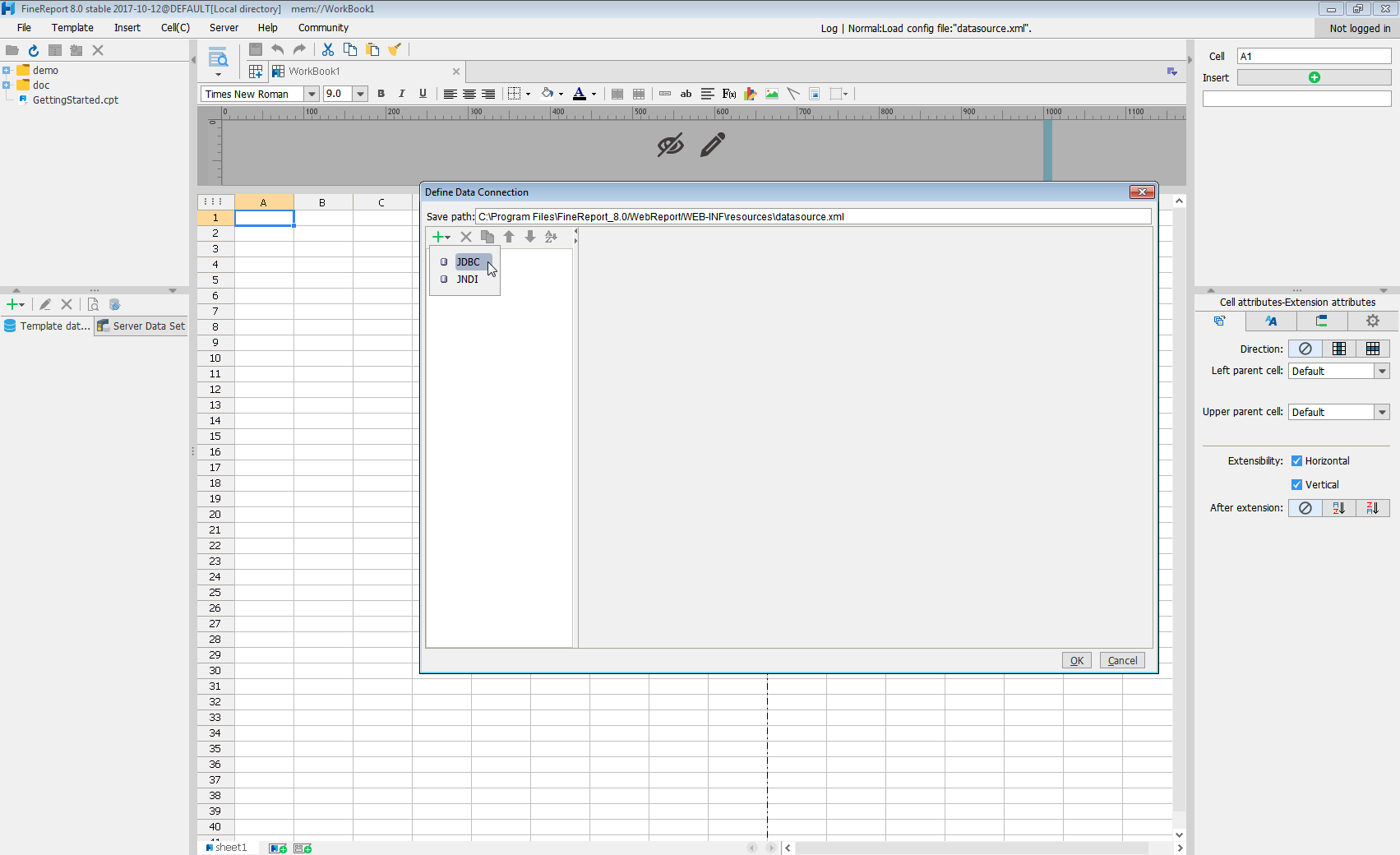
Next we will set up the data connection definition in the window.
- Database: Others
- JDBC Driver: cdata.jdbc.adobe commerce.Adobe CommerceDriver
-
URL: A standard JDBC connection string using semicolon-separated connection properties.
Adobe Commerce uses the OAuth 1 authentication standard. To connect to the Adobe Commerce REST API, you will need to obtain values for the OAuthClientId, OAuthClientSecret, and CallbackURL connection properties by registering an app with your Adobe Commerce system. See the "Getting Started" section in the help documentation for a guide to obtaining the OAuth values and connecting.
You will also need to provide the URL to your Adobe Commerce system. The URL depends on whether you are using the Adobe Commerce REST API as a customer or administrator.
Customer: To use Adobe Commerce as a customer, make sure you have created a customer account in the Adobe Commerce homepage. To do so, click Account -> Register. You can then set the URL connection property to the endpoint of your Adobe Commerce system.
Administrator: To access Adobe Commerce as an administrator, set CustomAdminPath instead. This value can be obtained in the Advanced settings in the Admin menu, which can be accessed by selecting System -> Configuration -> Advanced -> Admin -> Admin Base URL.
If the Use Custom Admin Path setting on this page is set to YES, the value is inside the Custom Admin Path text box; otherwise, set the CustomAdminPath connection property to the default value, which is "admin".
Built-in Connection String Designer
For assistance in constructing the JDBC URL, use the connection string designer built into the Adobe Commerce JDBC Driver. Either double-click the JAR file or execute the jar file from the command-line.
java -jar cdata.jdbc.adobe commerce.jarFill in the connection properties and copy the connection string to the clipboard.
![Using the built-in connection string designer to generate a JDBC URL (Salesforce is shown.)]()
When you configure the JDBC URL, you may also want to set the Max Rows connection property. This will limit the number of rows returned, which is especially helpful for improving performance when designing reports and visualizations.
A typical JDBC URL is below:
jdbc:adobe commerce:OAuthClientId=MyConsumerKey;OAuthClientSecret=MyConsumerSecret;CallbackURL=http://127.0.0.1:33333;Url=https://myAdobe Commercehost.com; - Click Connection pool attributes and set Test before getting connections to No.
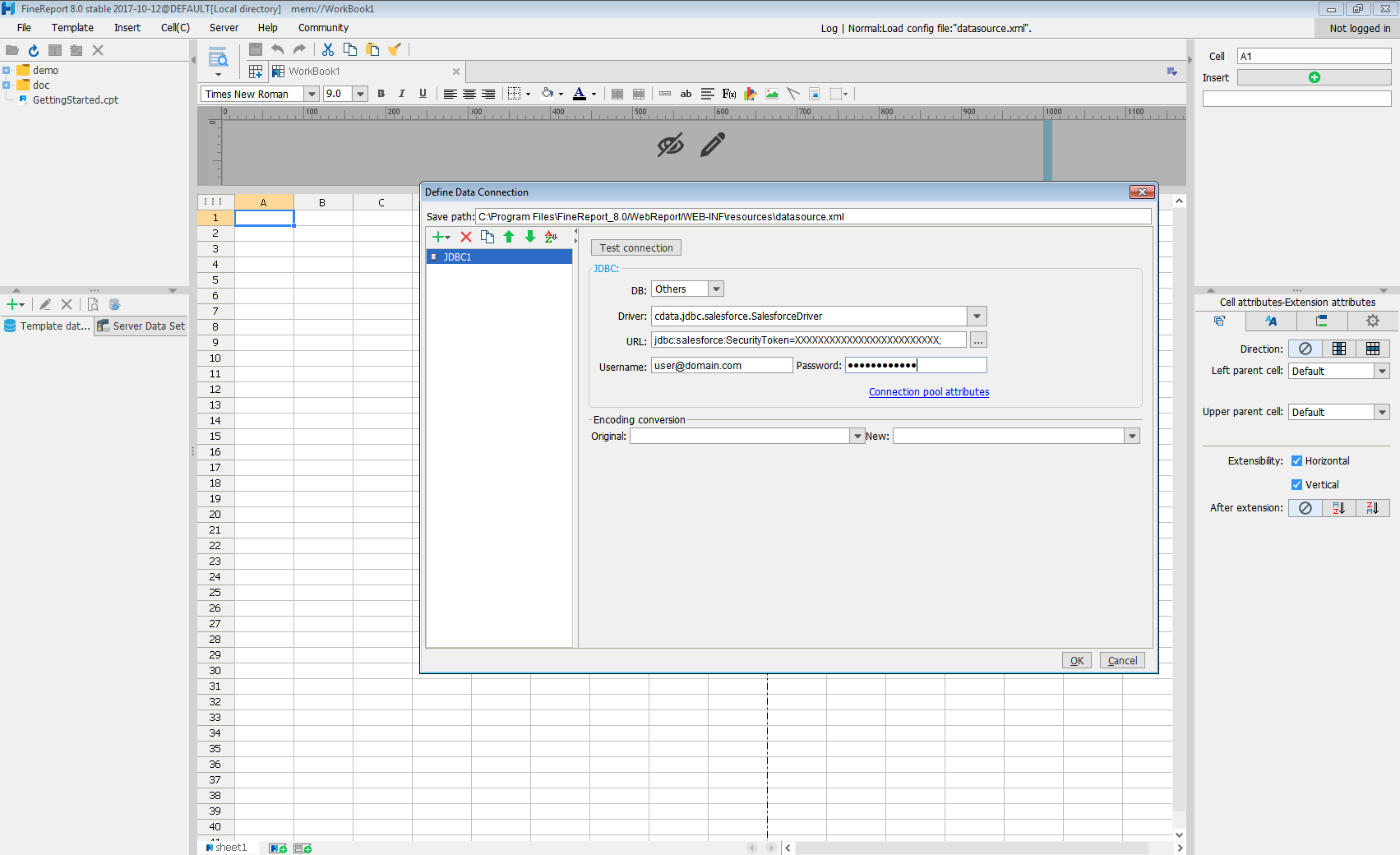
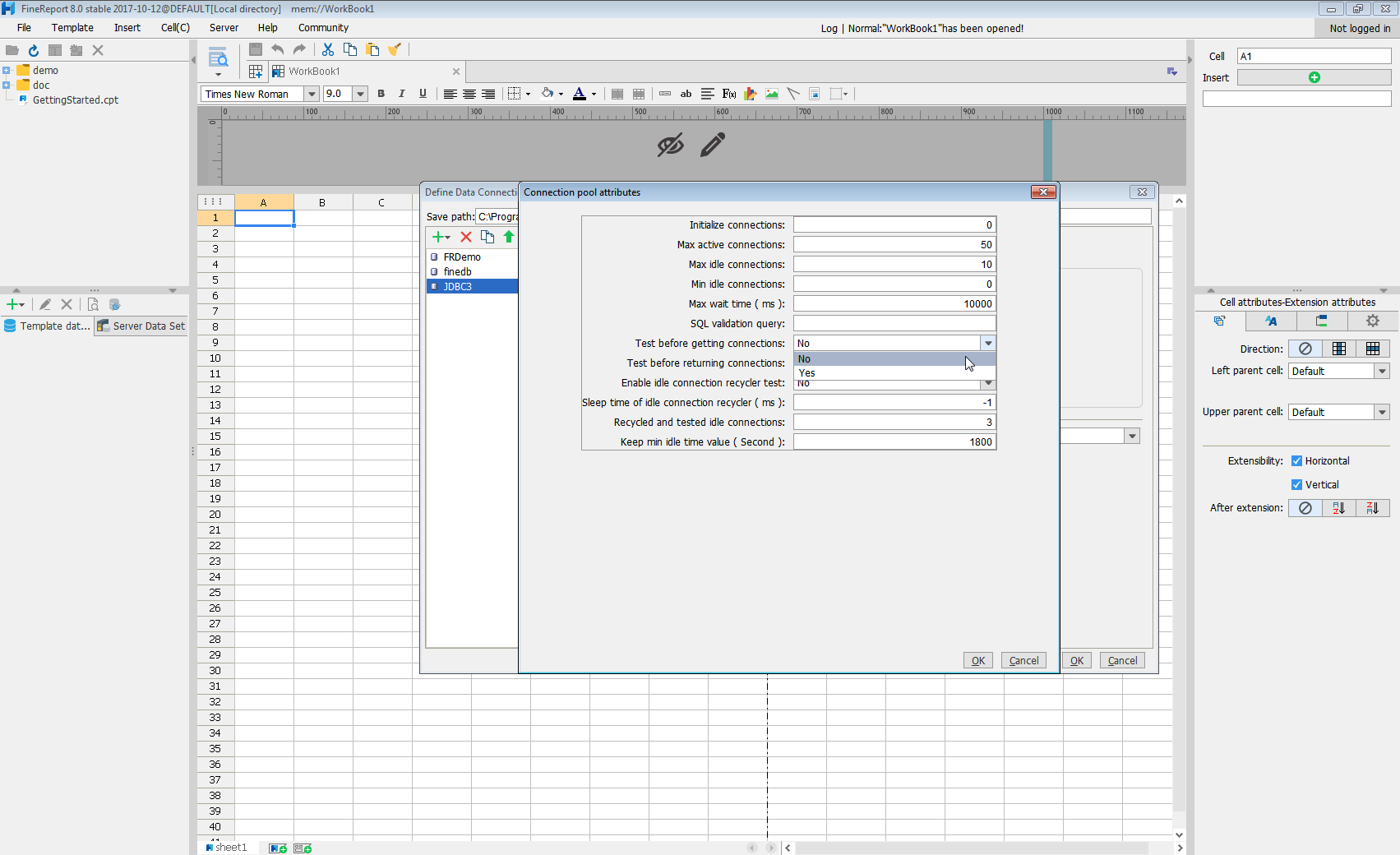
Click Test connection to ensure you have configured the connection properly. With the connection to Adobe Commerce set up, you can use it as FineReport data source.
Select Adobe Commerce Data in the Report Designer.
- Click to add a new template data set and select DB query to open the database query window.
- Choose the JDBC connection that you created from the dropdown list.
- The Adobe Commerce entities will appear as tables on the left pane.
- Write a SELECT statement for the Adobe Commerce data tables and columns that you want to load.
- Click preview and data is shown as table.
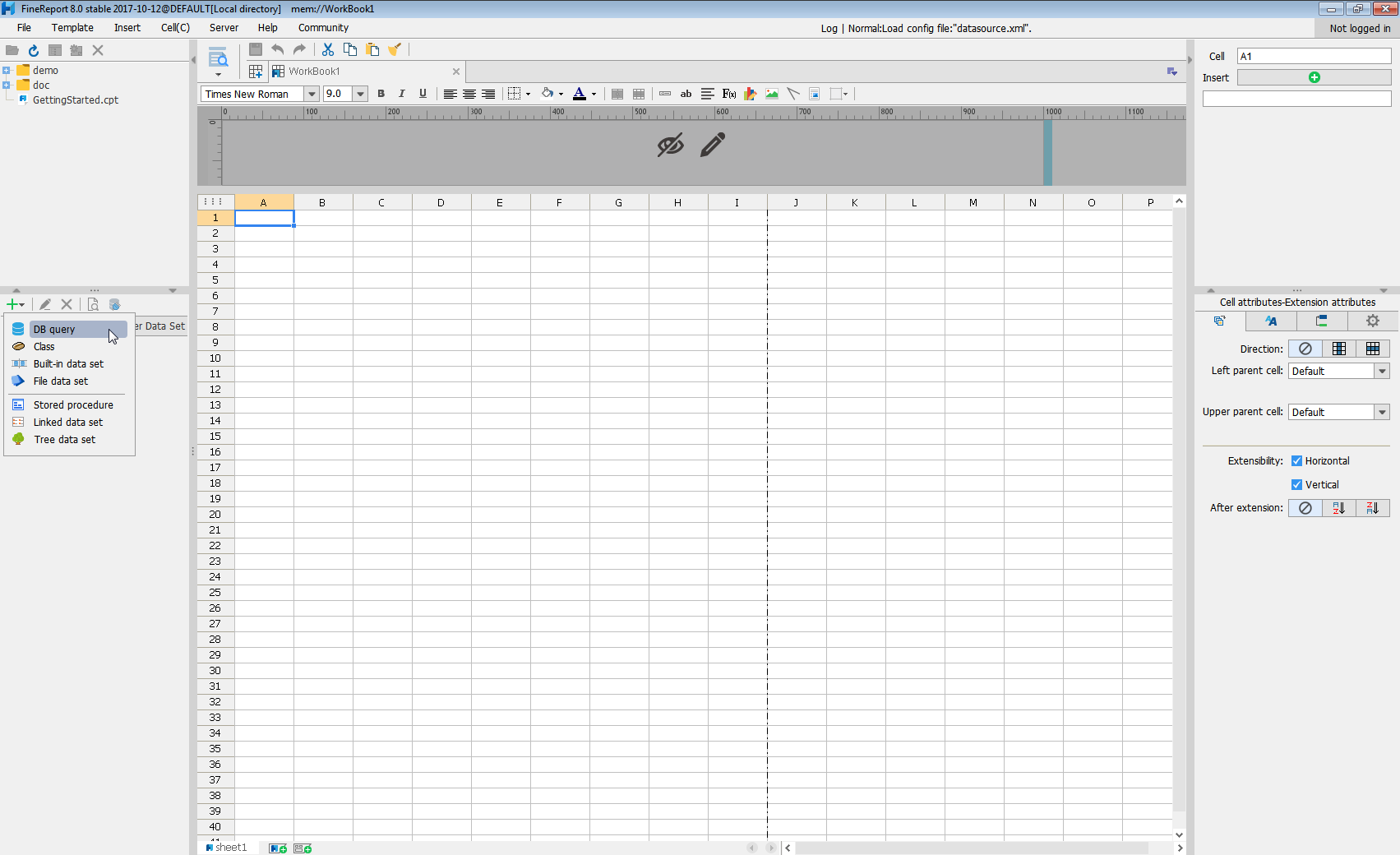
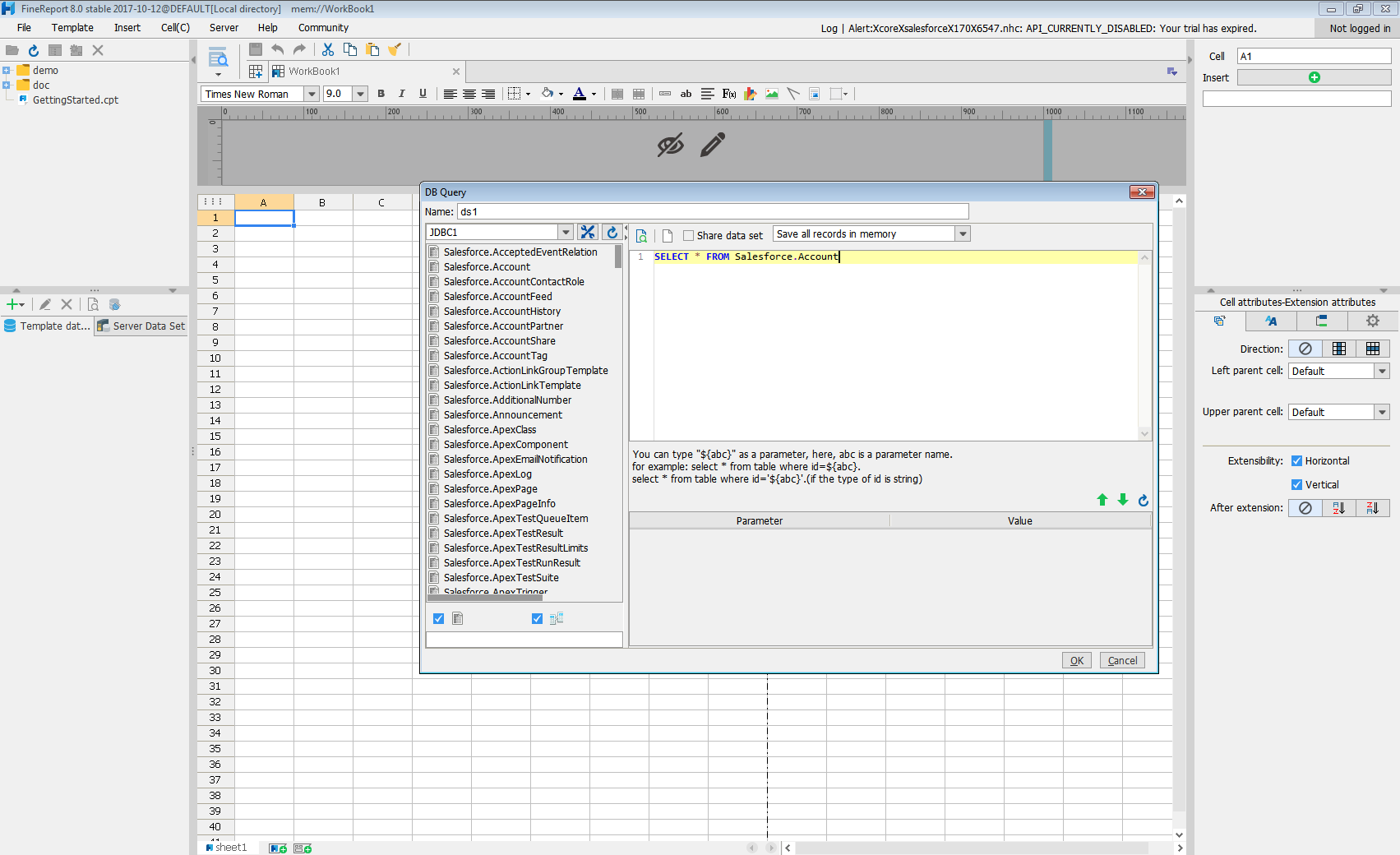
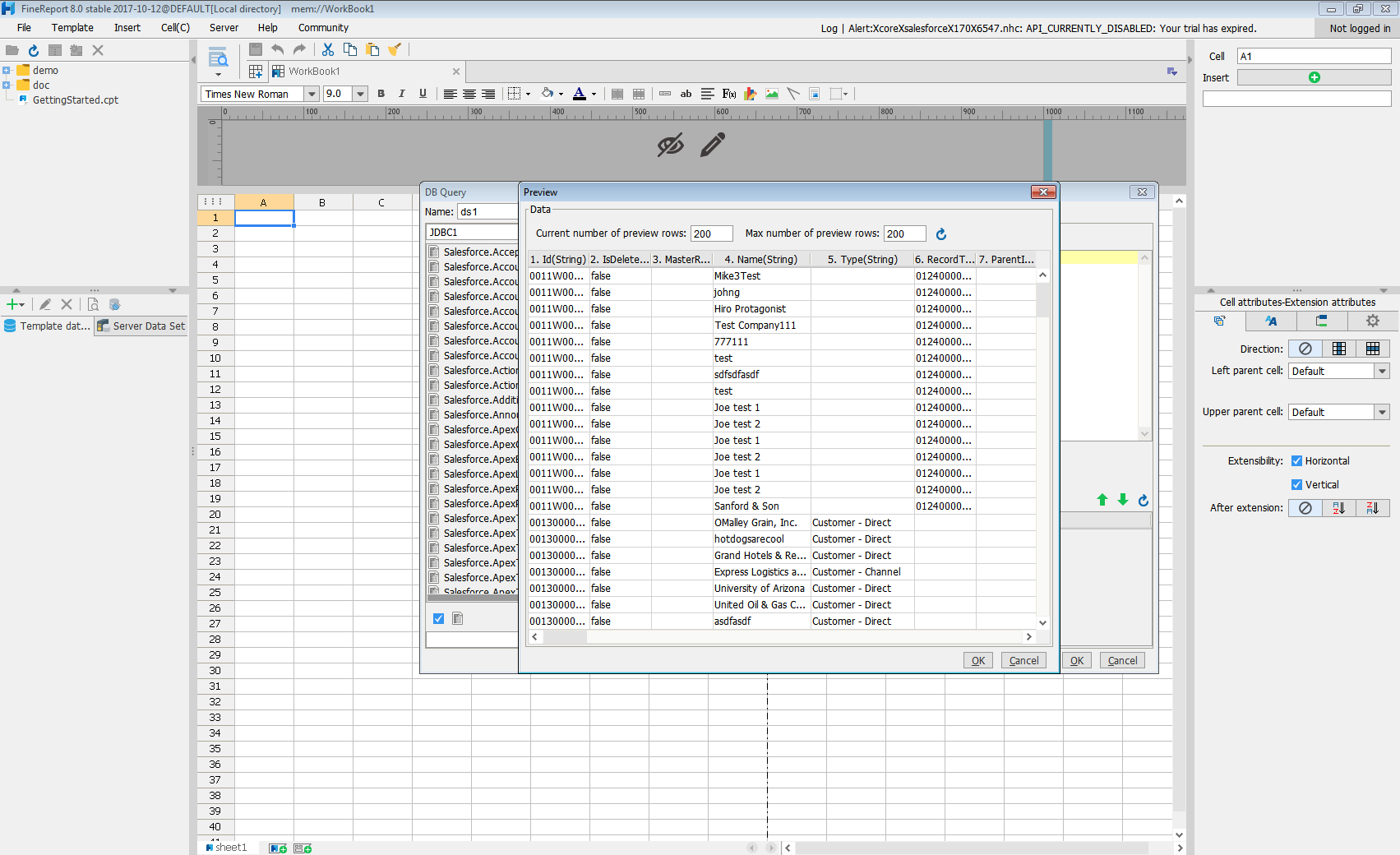
With these simple steps, Adobe Commerce can be used as a JDBC data source in FineReport.







